So, you’re interested in solar.
You’ve probably heard the process of going solar referred to as “the solar journey.” Well, it doesn’t have to be a journey. It can be a direct, interesting, and surprisingly quick experience if you have the right information, and know the right questions to ask.
How expensive will it be? How long will it take? What incentives are available? What have others done to make it easier?
That’s what this guide is all about: Helping you make a decision on solar (and storage). Here you’ll learn about all the important things to know before you go solar, including:
- The solar market
- Common concerns about going solar
- Where to learn more and how to choose an installer
- Incentives and financing options
- Solar + storage
- EVs and whole home electrification
- Costs and system sizes
- And more
But these just aren’t our thoughts. To get insight into the real issues and real feelings of consumers like you, we conducted research with over 1,000 homeowners that were either interested in or already had solar. Everything here is based on what we learned from that data.
Use this guide however is most relevant for you. We’ve included internal and external links throughout so you can jump around. Choose the path that makes most sense for your unique needs.
Ready? Let’s jump in.
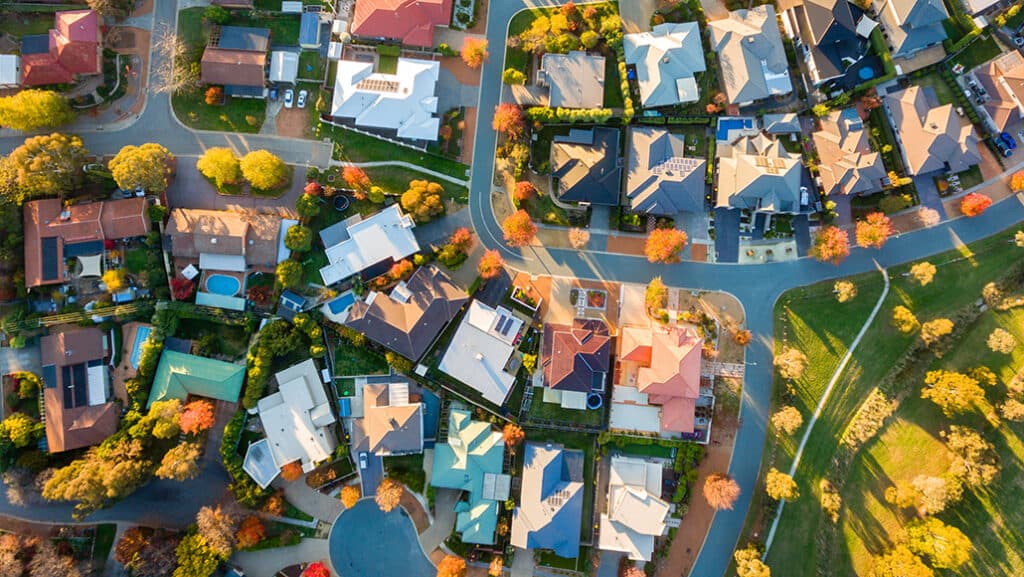
The solar market
The U.S. solar market is coming off a tough year. With high interest rates, shifting policies, and some highly publicized failings, the industry has taken a beating in the press.
Of particular note, you’ve probably heard of the “One Big Beautiful Bill” (OBBB) budget that passed Congress and was signed into law. One thing that can be said about it is that it’s anything but “beautiful” for households that use electricity (which is to say every household).
The OBBB eliminates the 30% Investment Tax Credit for solar at the end of 2025, making solar more expensive to install for homeowners.
Put another way, there will never be a better time to go solar than right now. Systems installed by the end of 2025 will still be eligible for the tax credit, basically a 30% discount.
To learn the latest about where solar incentives stand, check out our blog, Why now is the best time to go solar: What recent policy changes mean for you.
But, despite these things, solar remains an incredibly good investment. Just ask the homeowners who already have solar.
That’s right, almost 90% of homeowners who have panels on their house think that solar is a good investment (we conducted this research before the OBBB). And the number one reason homeowners continue to get solar panels on their roofs is utility bill savings.
Of course, cost savings isn’t the only reason to go solar. Far from it.
We can see another major goal is energy independence. This goes beyond generating your own power and relying less on the utility company — you know, that one that’s always requesting rate hikes?
When paired with a home battery, solar is a great way to keep the lights on during power disruptions — more reliable, less noisy, and cleaner than a traditional generator to boot. As extreme weather affects more households, more often, this resilience is becoming a serious motivator for solar installs.
There’s also a third major reason that continues to grow: reducing your environmental impact. As we all know, solar provides clean, zero emissions power. The electric company… does not. So, solar isn’t just a good financial investment, it’s an investment in a cleaner, more sustainable future.
Along with all these reasons to consider solar, it’s only natural to have concerns. We’ll look at those in the next section.

Common concerns about going solar
Look, any way you slice it, solar is a large purchase and a long commitment. It affects the way your house looks and the way you consume energy. Of course you have concerns.
You’re not alone. As with any big purchase, everyone has some concerns before signing on the dotted line (or tablet). Here’s what other homeowners considering solar have on their minds.
Sound familiar? Here’s the thing: All of these are legitimate questions! You should absolutely get answers to anything you’re wondering about before getting a solar system installed. And any installer worth their salt will have real answers for you.
Based on our research, here are the most common questions people looking to go solar have:
- Will solar save me money?
- How much will solar cost?
- How do I finance solar?
- What solar incentives are available?
- Is my roof right for solar?
- How will solar panels look on my roof?
- How do I find the right solar installer for me?
- How long will the install take?
- What about solar warranties and maintenance?
- What if I sell my home?
We’ll take a look at each of these in more detail, provide a little more information and context, and figure out some questions to ask potential installers. Click through to the ones you’re interested in most.
Will solar save me money?
Well, this is the big question, right? Over the course of the next few questions we’ll go into more detail on the aspects of a solar system that add up to savings.
Right off the bat we can say that, if your roof is right for solar, the answer is very likely, “Yes.”
But, there’s also a lot to think about, and a lot of it is specific to your situation. Do you have to be cashflow positive every month? Do you want to cut your utility bill immediately and not have to think about it? Are you interested in a longer term plan where it may take a few years to recoup your upfront investment, but after that the savings are all yours?
Here are a few of the factors that will influence how much money a solar system will save you.
System size: Obviously, the bigger the system, the more power you produce, the higher your potential savings. But it’s not quite that simple. Get a system that’s too big, and you may have excess energy that you don’t get fully compensated for. Some states even have regulations about what percentage of your power consumption you can cover with solar.
Jump to the system sizing section.
Incentives: The good news is that there are many national, state, and even local incentives that can help cut the upfront cost of a solar installation. Depending on your state, there are also net metering programs — where the power company pays you for the excess energy your solar panels produce — that can help.
As we mentioned above, perhaps the biggest incentive, the solar Investment Tax Credit (ITC) that lets you write 30% of the cost of your solar system off your taxes, is going away at the end of 2025. We have a lot more about this in our incentives section.
Jump to the incentives section.
Financing: Cash, solar loans, third-party ownership (TPO) like leases and power purchase agreements — there’s no shortage of ways to pay for a solar system. With high interest rates, it seems like the days of 0% financing for solar are gone (for now), which has led to an increase in third-party ownership. But while our research shows that 51% of installers say customers prefer TPO, only 21% of customers said the same. Financing is one of the most important considerations, so it’s important to know all the facts before you commit.
Jump to the financing section.
Other electrification projects: Since solar produces electricity, electrifying your home along with a solar install can often increase savings. Switching out oil heat for a heat pump. Trading that gas hot water heater for a heat pump hot water heater. Even getting an EV. Sizing your system with all your electricity use factored in can often result in more savings.
Jump to the electrification section.
There’s also the potential to save even more with battery storage. Saving power from when the panels are generating the most and using it when rates are highest can multiply the savings, depending on your specific state regulations. And it can keep the lights on during power outages.
Jump to the battery storage section.
What you can do
Understand the incentives: There are so many different incentives available it can feel overwhelming. The Investment Tax Credit alone gives you 30% of your system cost back on your taxes. (Yes, you read that right.) Your installer can help you make sure you take advantage.
Investigate all the financing options: Don’t forget about options like third-party ownership. Depending on your financial situation, there is likely a way to finance solar that will save you money.
See the savings: An installer should be able to show you the monthly, yearly, and lifetime savings a solar system will deliver. Make sure you understand all the inputs involved, and all the savings numbers: incentives, self-use, selling back to the grid.
How much will solar cost?
It’s no surprise that cost bubbles to the top when it comes to solar. As we said, it’s a big commitment, at least the equivalent of buying a car — if that car provided free electricity for you to use and sell back to the power company.
There’s also the larger picture: uncertainty around inflation, high interest rates, confusing incentives.
It makes sense, then, that 78% of homeowners in our research who were thinking about installing solar listed “higher than expected initial expenses” or “uncertainty about return on investment (ROI)” as a concern.
What you can do
Any homeowner considering solar should absolutely shop around to get the system and deal that works best for their finances. But how, exactly, do you do that?
Get the actual price: This may sound obvious, but just like when you’re buying a car, it can sometimes be a challenge to be confident you’re comparing apples to apples with solar estimates. Be sure you get the actual price, see what’s taken off for incentives, and get a net cost-per-watt before committing. A solar marketplace can be a good place to start, letting you compare estimates easily in one place.
Understand the financing options: There are many ways to finance a solar system, including cash, solar loans, and third-party ownership (like leases and power-purchase agreements). Make sure the installer presents all the options so you can decide what works best for you.
Jump directly to the Solar Financing section
Get it in writing: Power production guarantees — where an installer guarantees a solar system will produce a certain amount of energy based on projections — make sure you get the performance, and saving, you were expecting.
How do I finance solar?
There are several ways to finance a solar system, each with different pros and cons. We’ll go into each briefly here:
Jump directly to the Solar Financing section
Cash: Let’s start with the most obvious. When you pay cash, there is no financing and you keep all the incentives, but it’s also a large upfront cost.
Solar loans: You get a loan from a financing company (there are many options your installer can show you) and make monthly payments on the balance. You still keep all the incentives, and the upfront cost varies.
Third-party ownership: With this model, a third-party owns the panels on your roof. You get a monthly payment from them based on your production, or can buy power you produce at a discount. There’s little or no upfront cost, and the third-party owner gets all the incentives.
What you can do
Research: This is one of the most important decisions you’ll make when it comes to solar. So, make sure you understand all the options.
Jump directly to the Solar Financing section
Shop around: Different installers work with different financing companies. If one doesn’t have exactly what you’re looking for, ask another one.
What solar incentives are available?
Where to begin… There are many incentives available for solar at the federal, state, and even local level. Far too many to list here.
The Investment Tax Credit (ITC) is the major federal incentive that you may have heard of. It gives homeowners 30% of the system’s cost off of their federal tax bill.
While it was initially slated to last through 2032, the latest budget (the… interestingly… named “One Big Beautiful Bill”) ends it on the last day of 2025. That means that there has never been a better time to go solar, and if you can get your system installed this year you’ll still be eligible for the credit.
There are also many different ways these incentives are applied. The ITC is a tax incentive — it comes directly off of your taxes. Other incentives may be cash back, or just taken off the price of the system.
This means it’s not only important to know all the potential incentives you qualify for, but how all the incentives are applied — and whether they apply for the financing option you choose. A solar installer will be able to help you with this, but it’s important to go in knowing the basics.
What you can do
Learn about your state: The DSIRE database is a great resource to see what incentives are available in many states.
Is my roof right for solar?
While you can’t control how much sun your roof gets, it can be hard to tell from the ground whether it gets enough for solar to be worthwhile. Some houses with shady back yards end up being great for solar, some homes where the lawn is baked brown in the summer get shade on the roof.
Then there’s the positioning of your house. Do you have big roof faces? What direction do they face? Generally speaking, roofs facing south get more sun than those facing north (in the Northern Hemisphere), east-facing roofs get more sun in the morning, west-facing in the evening.
There’s also the amount of that sun that reaches your roof. If your roof is shaded by trees or other obstructions, that can affect the effectiveness of a solar install.
Don’t worry, you don’t need to figure this all out on your own. Any installer worth considering will have software that analyzes your roof’s solar potential without ever getting up on that roof. They can place panels where the roof gets the most sun exposure — the most irradiance — and even avoid obstructions like pipes, skylights, and chimneys.

What you can do
See for yourself: Sit with the installer and ask them to show you the irradiance your roof gets, where the obstructions are, and how panels might fit.
Get an estimate: Your system’s production will be affected by the number of panels you have and how much energy each panel produces (how much sun it gets). The installer can show you multiple options based on your solar access and solar goals.
Get another estimate: One isn’t enough. Different panel types, placed in different places will produce different amounts of energy.
How will solar panels look on my roof?
If we had a nickel for every time we’ve heard something like, “I love the idea of solar, but I don’t think I’ll like how the panels look on my roof.” While this used to be a legitimate concern, the options available now make this a much easier decision.
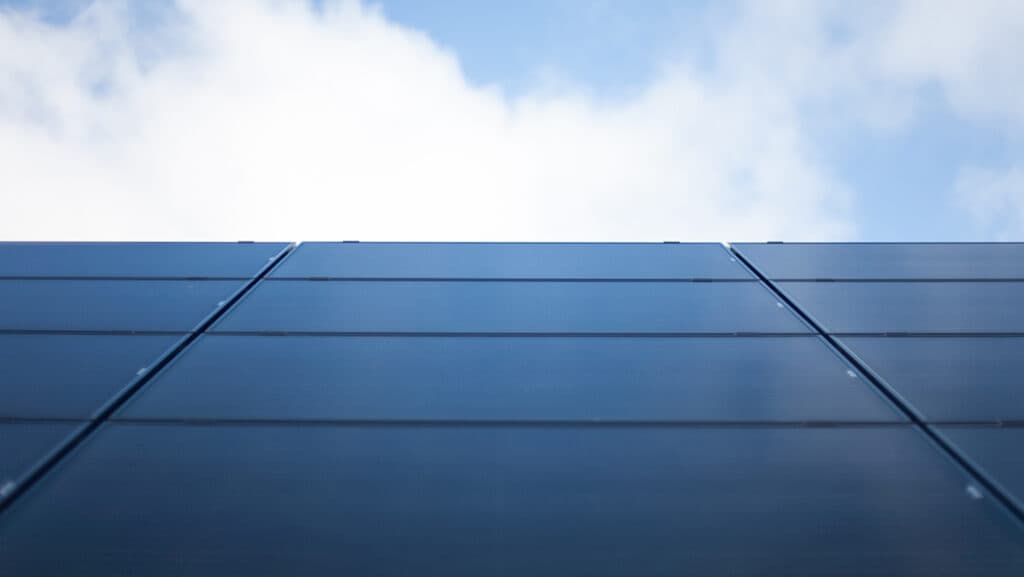
Solar panels look sleeker than ever, from black-on-black panels and borders that look like one continuous sheet, to various solar shingle options that provide a clean look. It’s up to you, what you want your house to look like, and what your budget is.
What you can do
As with the, “Is my roof right for solar” question, installers should be able to show you, in detail, how your roof will look with different types of panels, so:
See for yourself: Sit with the installer and ask them to show you different options. Panels have a wide variety of looks, from bluish with silver backing and borders, to black panels with black borders and backing. How do solar shingles look? What do you want your house to look like?
How do I find the right solar installer for me?
Solar installers aren’t one-size-fits-all. Some people want a big, national company. Others want a local that knows all the ins-and-outs of their town. When we surveyed homeowners about what they were looking for in an installer, we got a variety of answers.
A few things do stand out. First, homeowners are concerned with an installer’s expertise — which shows through certifications and warranty and support services. This makes sense, solar is a big purchase and you want to be sure it’s installed right and the company will stand behind its work.
Right now you’re likely asking, “Yes, but where do I find this information?”
One of the most helpful places can be an online marketplace. A marketplace can get you real estimates with no obligation, show you what panels could look like on your home, and connect you with trusted solar installers, in addition to providing information on all the basics.
What you can do
Ask your neighbors: Know someone who has solar? Ask them about their experience, who they went with, what went right for them, and what didn’t.
Use an online marketplace: A marketplace can match you with trusted installers that are ready to work with you, and let you compare multiple quotes, all in one place.
How long will the install take?
Your actual solar install — putting the panels on the roof — won’t take long at all, a day or so depending on the size of the system, difficulty of the roof, and other factors.
The permitting process? That’s a little more tricky. This can be the most frustrating part of the solar process. All told, the entire solar install process can take 90-120 days, depending on your location and local regulations.
The process can also be broken into two parts: before and after the system is installed. Before the install, the installer needs things like electrical and building permits and any inspections those require.
But, once your panels are on the roof, ready to go, you’re not done yet. You still need to connect your solar system to the grid. This is called interconnection and also has a range of requirements before your system can be “turned on.”
It will eventually happen, but it can take 30 days or more once the system is installed.
What you can do
Stay engaged: Delays are common, unfortunately, so stay informed. If you’re wondering about anything, ask your installer.
What about solar warranties and maintenance?
Solar panels typically come with two types of warranties: A product warranty and a performance warranty.
The product warranty covers equipment and generally guarantees at least 10-12 years without failing — with some extending to 25 years or longer.
The performance (or power) warranty can vary, but a good rule of thumb is at least 90% production at 10 years and 80% at 25 years. On the high end, some performance warranties may guarantee 90% production even out to 25 years.
Warranties generally don’t cover labor or shipping costs. Some may cover your inverter (or inverters), but it’s important to clarify that with the installer.
What you can do
Compare, compare, compare: If the peace-of-mind of a warranty is important to you, shop around. Different panel manufacturers offer different warranties. Tell your installer what you’re looking for so they consider it when designing your system.
What if I sell my home?
What happens when you sell your home largely depends on the financing option you choose.
Cash: If you paid cash, the panels are yours. Period. There should be no issues when you sell your house (and the system should actually be a selling point).
Loan: Loans can be a bit more complex, depending on how much of the loan term is left when you sell, and the credit worthiness of the buyer. Your solar lender may allow you to transfer the loan to your home’s buyer, but it will likely require a credit check.
Third-party ownership — power-purchase agreements: Power-purchase agreements can usually be transferred to the new owner.
Third-party ownership — lease: With a solar lease you may have to buy out the remaining balance on the lease, and the new owner may need to agree to take over the lease.
Again, no matter what option you’ve chosen, solar is generally a good investment — and will be for the people buying your home.
What you can do
Consider it before choosing solar financing: Think about how likely you are to move, and when. Is this your forever home? Simply a stop along the way?
Explain it to home buyers: By now, your realtor should know all about solar. Make sure to explain whatever your financing situation is to potential buyers — and explain that solar is a net benefit no matter what financing option you have.
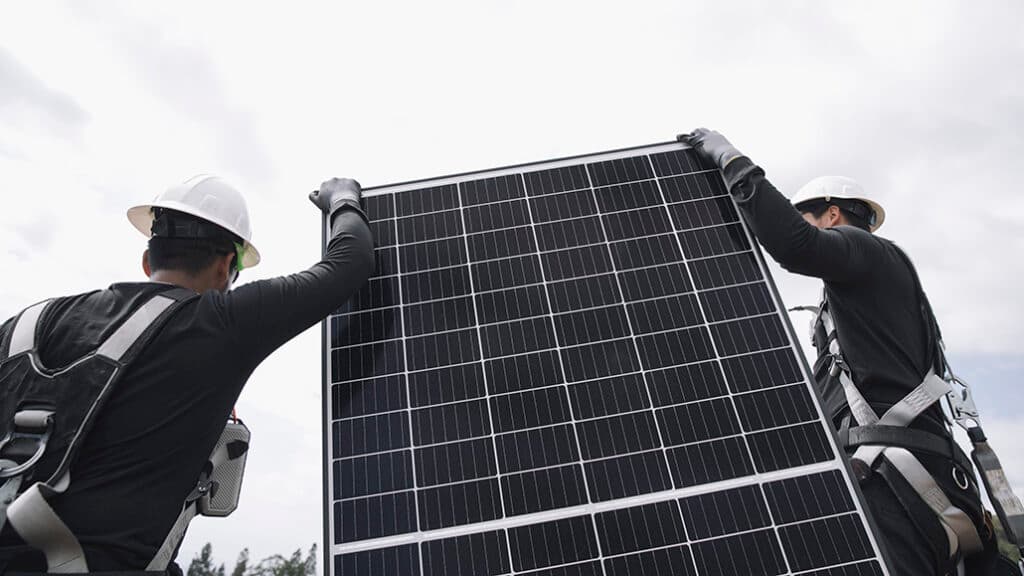
Where to learn more & how to choose an installer
While we just looked at the most common questions homeowners have, every situation is different. It’s important that you get all your individual questions answered, as well. Thankfully there are plenty of resources available at every stage of your potential solar project. Here are a few of our go-tos:
- 2025 Aurora Solar Snapshot: Want to learn more about what installers are thinking? Check out this resource to get the scoop.
- Rewiring America Calculator: Ready to see savings? Simply enter a few details about your situation, your zip code and your email address, and this calculator will show you your potential savings with solar.
- CNET Home & Utilities: At the beginning of your solar journey? This site is a great resource for all the high-level information you need.
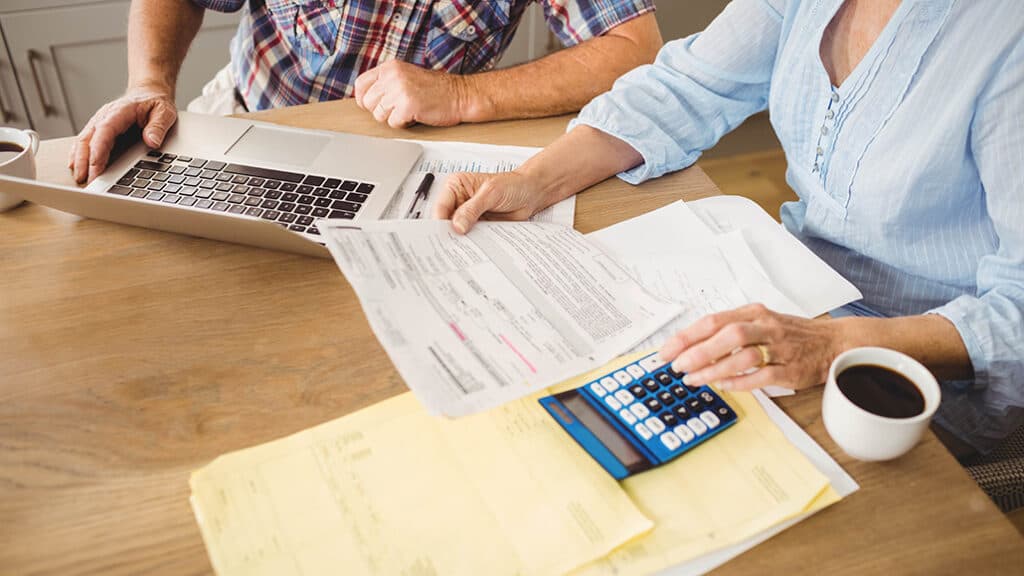
Incentives and financing options
There are three basic ways to finance a solar system: cash, solar loan, or third-party ownership. We charted them above to show the rough monthly savings you can expect from each one over time. One thing every solar scenario has in common: The monthly cost of electricity from your utility company is constantly rising. So, the monthly savings for solar only grows.
Let’s look at each financing option individually, including what a typical monthly savings might look like for an average home.
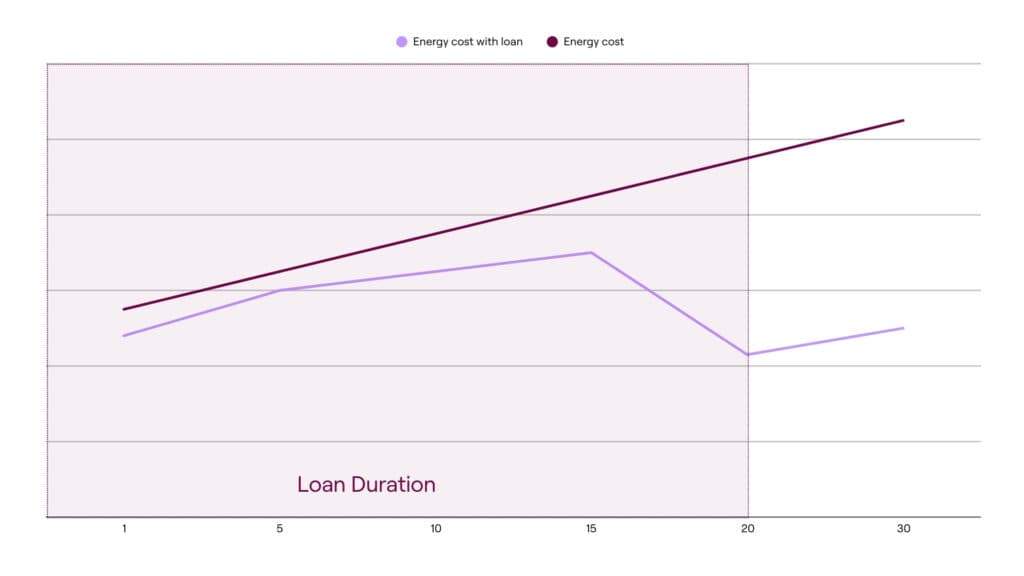
Solar Loan
Upfront cost: Low
Monthly savings: Medium
Payback period: Medium
It can be difficult to pay for 25 years of electricity in one transaction, so solar financing makes a new solar installation more accessible without a significant amount of cash upfront. Loans are typically set over 10 to 20 years with monthly payments sent to banks, lenders, or solar financing companies — and are one of the easiest ways to pay for solar.
By financing a solar system with a loan, you can instantly add value to your property and reap the benefits of solar ownership. Even with higher interest rates these days, there are still some loans available with little or no money down. Many loan options also still feature relatively low-fixed interest payments, and the federal Investment Tax Credit (ITC) and local incentives can generally still be applied. And when the loan is paid off, the monthly savings are even more impressive.
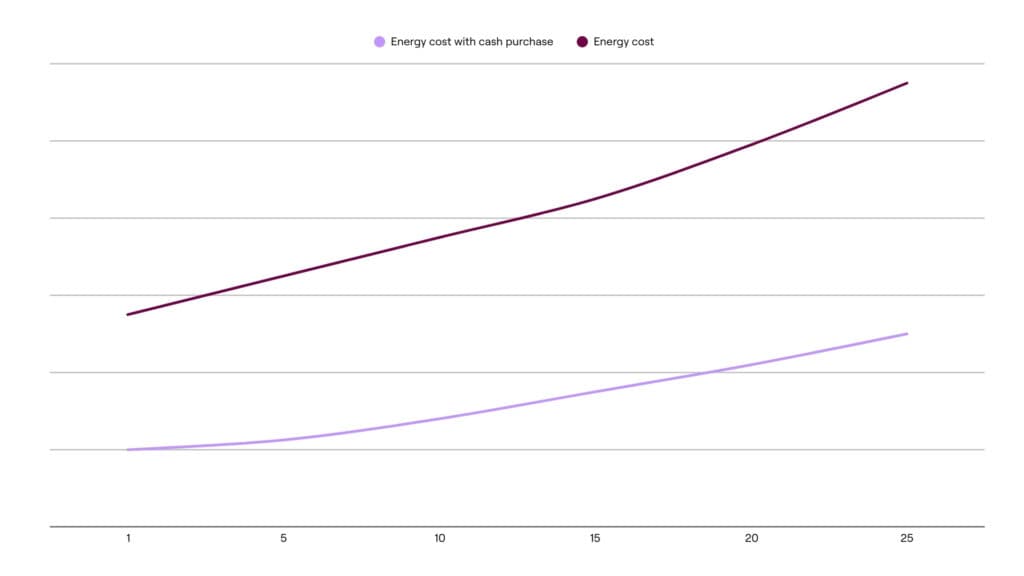
Cash
Upfront cost: High
Monthly savings: High
Payback period: Short
Without ongoing monthly payments, a cash deal for solar panels is almost always the quickest way to reach a break-even point where the price of the system equals the costs of utility electricity avoided.
While not always realistic for homeowners, cash payments are often the best way to maximize both long-term and monthly energy bill savings. Especially for those with enough tax liability to take full advantage of solar financial incentives and rebates, solar systems can pay for themselves more quickly without any ongoing loan or lease expenses.
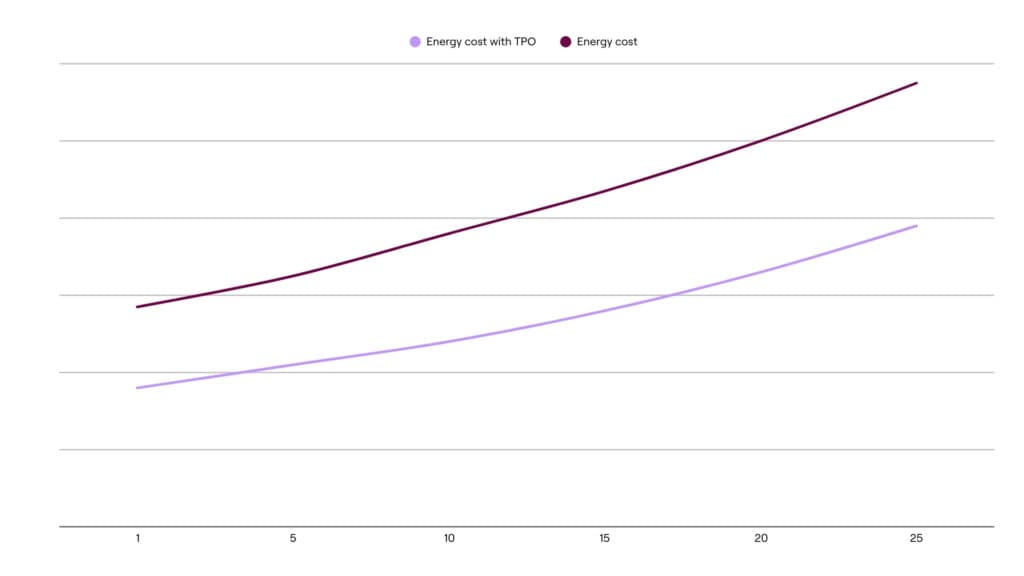
Third-party ownership
Upfront cost: Zero
Monthly savings: Medium
Payback period: N/A
With the continuing high interest rates, third-party ownership (TPO) has become more popular. Right now you may be thinking: “OK, great. Quick question: What is TPO?”
Don’t worry, you’re not alone. In our research, more than 50% of the installers we surveyed said third-party ownership was the first choice for financing solar projects, but only about 20% of homeowners interested in solar said the same thing.
As you may have guessed, with third-party ownership a solar system is owned, installed, and maintained by a third party. Homeowners enter into a power purchasing agreement (PPA) or can lease the equipment from the third party.
Under a lease, you rent the solar equipment from a third party, generally with monthly payments. With a PPA, instead of renting the equipment, you purchase the electricity produced by the panels at a discounted price.
In the chart above we look at a typical lease. You can see the savings is very similar to what a loan might offer, just without the increase when the loan financing is paid off.
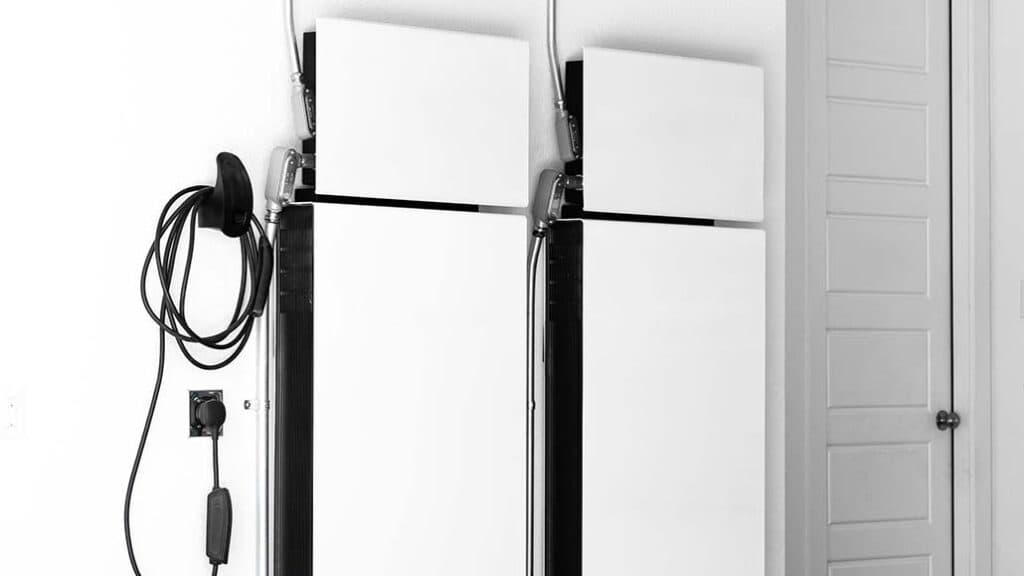
Solar + storage
So, we’ve talked a lot about solar, but there’s one more piece of the puzzle: battery storage.
We often call it battery backup, and a home battery can be a great way to ensure you still have power during outages — like a generator that doesn’t smell and require you to fill it with gas.
But, battery storage can be so much more than that now. Depending on where you live (👋 Californians!) adding battery storage to your solar installation can increase your utility bill savings.
Homeowners are starting to catch on. In California, the battery attachment rate — the percentage of solar systems that also have a battery attached — was 79% in the second half of 2024. It was 45% in Florida, 68% in Texas, and rose to 45% for the entire US.
In our research, 69% of homeowners said that reduced energy bills was the most valuable benefit of battery storage, ahead of energy resilience during outages (56%).
So, how does it work? Let’s look at three use cases for adding battery storage to your solar install.
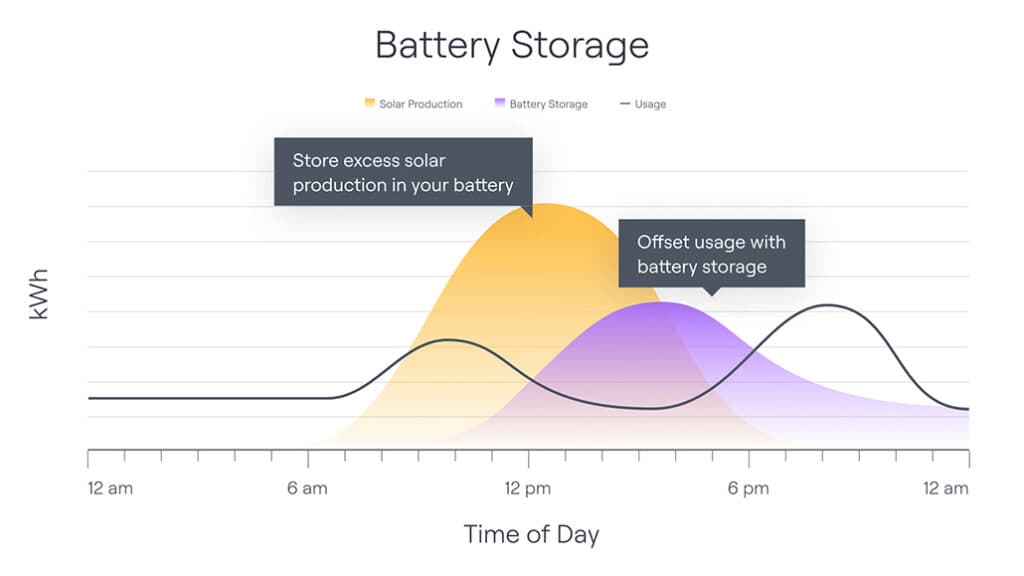
Backup
This is the most obvious case. When the power goes out, your home simply switches from grid power to running off your battery. You can select how much or little of your home is covered.
The return on investment case for battery backup is more around peace of mind and being able to live normally in areas with frequent blackouts and brownouts. But, you’ll probably save a few gallons of milk along the way, too.
Pros: No more power outages
Cons: Can be pricey, may not make sense in areas with few outages
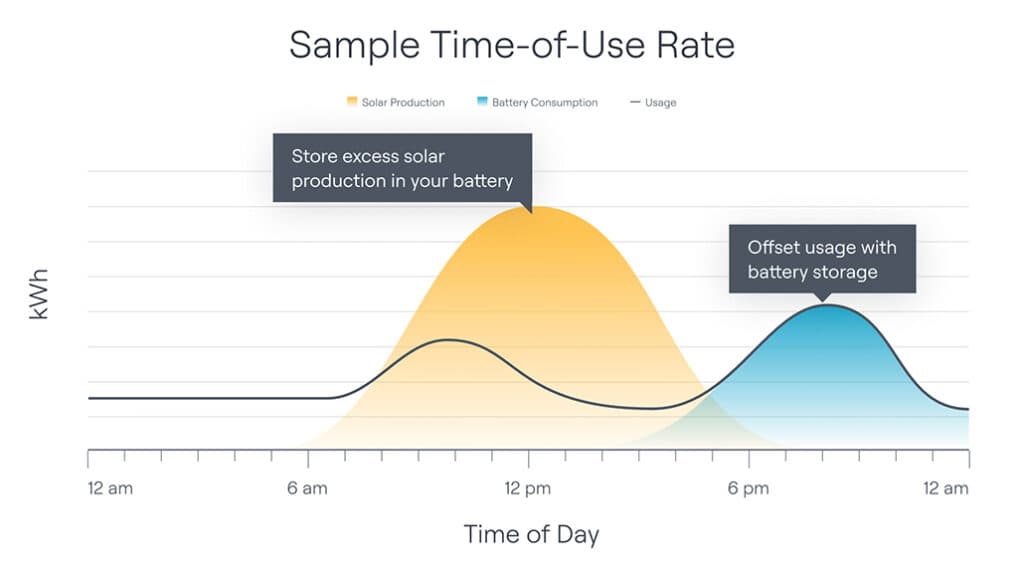
Storage for self-consumption
Next up, we take storage to its next logical use. Many utilities have time-of-use (TOU) electricity rates that feature peak pricing during the evening or occasionally morning hours, say 6pm-9pm in the summer when the customers are using a lot of energy for cooling, or 6am-9am in winters when customer demand is greatest.
With TOU rates, customers pay more to use electricity during these time windows, which means you can increase the value of the solar you generate by storing it in a battery and using it during these peak rate times. For example, if you’d get 10 cents per kWh of electricity sold to the grid in the middle of the day, but instead you could store it in a battery until the peak TOU window and offset consumption that would have cost 28 cents per kWh later in the day, you gain 18 cents per kWh.
This can really add up, month over month over month.
Pros: All the pros of a battery, lower electricity bills than with just solar
Cons: Initial cost of a battery can be high
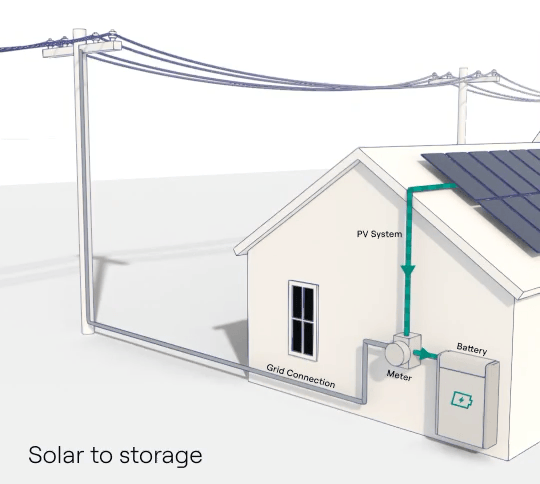
Energy arbitrage
With energy arbitrage, we take this concept of self-consumption one step further.
In certain markets (again 👋 California) the rates a utility charges aren’t the only things that change, the rate the utility pays you for excess solar energy you send to the grid also fluctuates. This export rate aims to encourage people with solar to sell energy to the grid during hours with high demand — helping prevent shortages.
In California, the current price structure features high-value export hours in summer evenings, when grid demand is especially high. During these times, a battery system can discharge as much power as possible and generate a large amount of bill credits, which you can then use to pay off utility bills later on.
For example, from 6-7pm in September, exporting 1 kWh of electricity to the grid results in $3.74 of credits, while exporting that same kWh at noon earns only $0.04 (yes, you read that correctly).
The chart below shows what battery self consumption might look like. The household here charges the battery during the day, then discharges to the grid in the late afternoon. The home then runs off electricity from the battery in the evening, before finally using grid power in the early morning hours.
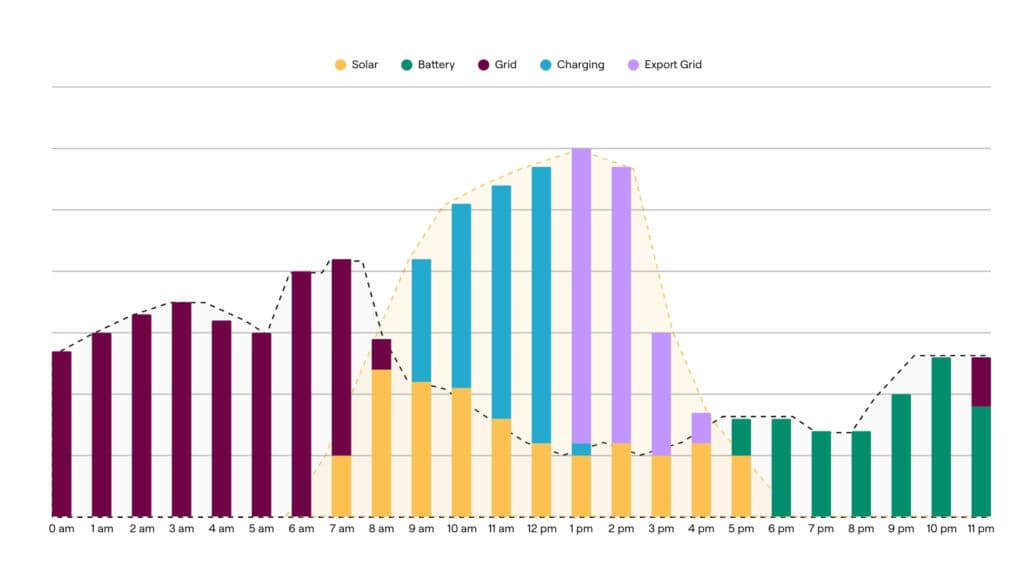
This is just for California, but many states are moving to time-of-use rates and variable export rates, so make sure to ask your installer about your area’s policies.
Pros: Even more potential for return on investment
Cons: Only makes sense in certain areas, initial price of battery
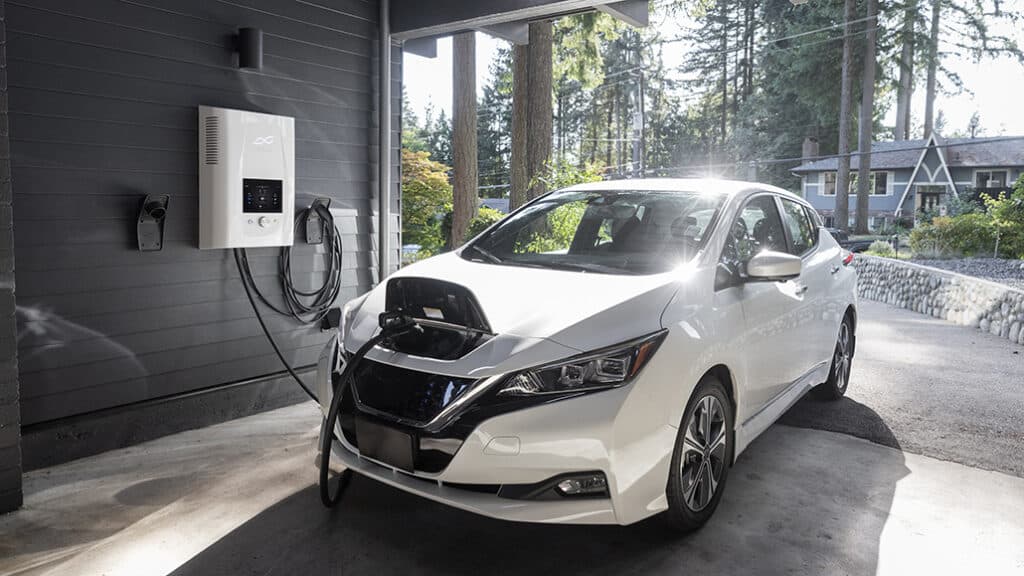
EVs and whole home electrification
Another potential piece of the solar puzzle is electric vehicles (EVs) and other home electrification projects. When you’re deciding on the size of your system, it’s a great time to factor in improvements like heat pumps, heat pump hot water heaters, electric stoves, and more.
Our research shows that 64% of homeowners consider solar to be more valuable when paired with other home electrification improvements. What’s more, from 1950 to 2018, the percentage of U.S. homes using electricity as their primary heating source increased from just 1% to nearly 40%. And as of 2020, over 25% of all U.S. homes were entirely electric, and in 2024, heat pumps outsold gas furnaces for the third year in a row — by 27%.
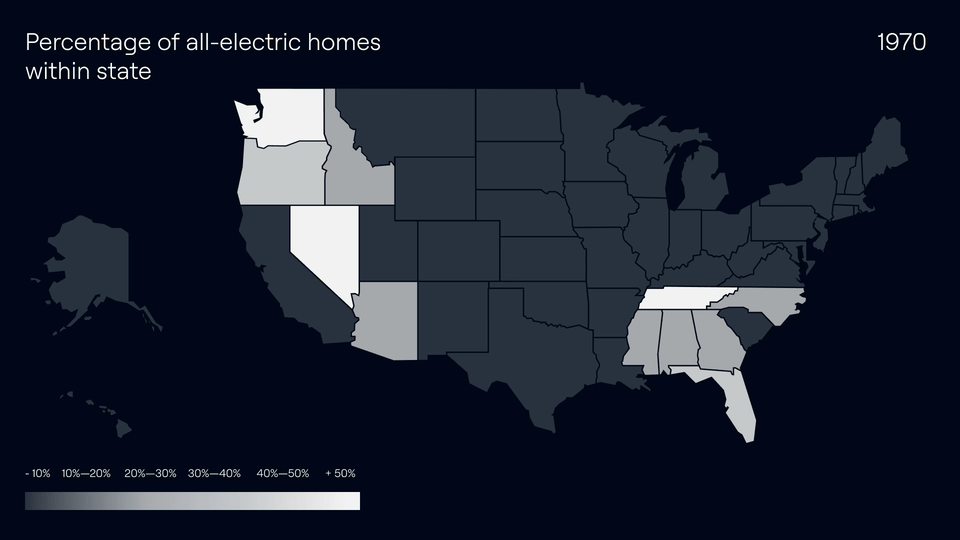
OK, those are the stats, but what works for you? Since you’re installing solar anyway, it pays (literally) to think about and plan upgrades that can save you money. Just to scratch the surface, switching to a heat pump water heater can save you an average of $330 per year, while an all-electric HVAC system can reduce energy costs by $1,000 annually.
And that EV? According to Edmunds, an average electric vehicle consumes about 394 kilowatt-hours (kWh) a month.
So, when you plan your solar system’s size, make sure you account for this added use. It can up your overall savings significantly.
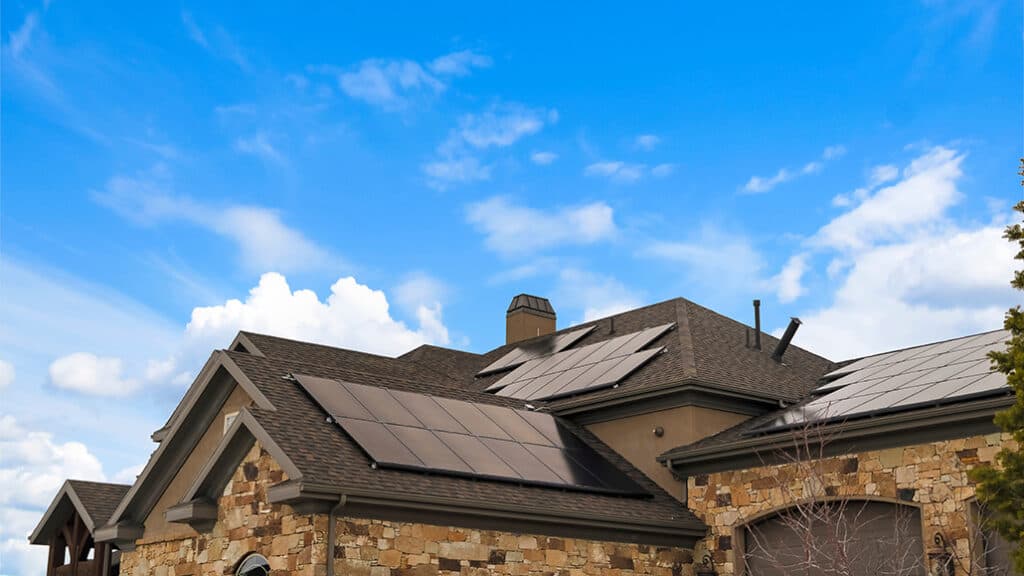
Costs and system sizes
It can be tempting to think, “I’m going solar anyway, let’s get the biggest system possible!”
We get it, you’re excited. Solar is exciting. May as well go big.
Of course, by now we know it’s not that simple. There are a lot of things to balance, including:
- Upfront cost
- How much of your roof is suitable for solar
- Whether you’re considering a battery
- Any electrical systems (EV, heat pump, etc.) you might add
- The net energy metering policies in your area
This list goes on. So, ask yourself some important questions, and be honest.
Are you going to be happy to overproduce and export the excess to the grid? In some states, the credits you get for exporting power back to the grid never expire, in other states they refresh yearly. There’s always the chance that net metering could change in your state — even if you’re grandfathered in.
How seasonal is your electricity use? In Northern climates, a bigger system might serve you well in the winter, but then produce more than you need in the summer.
So, make a list, talk to an installer or two, make sure you’re considering everything. Then? Get to it. If your house is right for it, the sooner you install, the sooner you start saving.
Conclusion
Adding solar to your home might seem complicated at first, but the process can be far more straightforward and rewarding than you might expect.
You’ve seen what motivates people to go solar, what concerns they have, and how homeowners are navigating financing and incentives, storage, EVs, and electrification. Solar isn’t just a way to save money: it’s a step toward greater energy resilience, independence, and sustainability.
Whether you’re ready to compare quotes, still gathering information, or just beginning to explore your options, we hope this guide helps you feel more confident, informed, and empowered.
Glossary: Terms you need to know
Technical System Components & Technologies
PV (Photovoltaic)
- Definition: A method of converting sunlight directly into electricity using semiconducting materials.
- Use: “PV system” = solar panel system.
Inverter
- Definition: Converts the DC (direct current) electricity produced by solar panels into AC (alternating current) electricity used by home appliances.
- Types: String inverter, microinverter, hybrid inverter.
MPPT (Maximum Power Point Tracking)
- Definition: A feature in inverters that optimizes the voltage and current to extract the maximum possible power from each panel.
BOS (Balance of System)
- Definition: Everything in a solar system except the solar panels — includes inverters, mounting, wiring, etc.
Racking / Mounting
- Definition: The hardware that supports solar panels on rooftops or the ground.
Energy Terms
kWh (Kilowatt-hour)
- Definition: A unit of energy. It represents the amount of power used over time (1 kW for 1 hour).
- Use: Utility bills and system production.
kW (Kilowatt)
- Definition: A measure of power. It shows the system’s capacity to generate electricity at a given moment. For example, a 4 kilowatt system will generate 4 kilowatt hours of electricity at full power in one hour. Likewise, a 1.8 kilowatt rated dishwasher will use 1.8 kilowatt hours of electricity in an hour cycle.
Net Metering (NEM)
- Definition: A billing arrangement where solar customers get credited for the excess electricity they send to the grid.
Export Rates
- Definition: What the power company pays you for every kilowatt hour of electricity you send to the grid. These rates can vary by the hour — very low during the day when the sun is shining, very high during peak times like early evening.
TOU (Time-of-Use) Rates
- Definition: Utility pricing where electricity costs vary by time of day — often higher during peak hours.
System Design & Ownership
Offset
- Definition: The percentage of a homeowner’s electricity usage that a solar system covers. (e.g., “100% offset” = covers all usage)
Interconnection
- Definition: The process of connecting a solar system to the utility grid.
Permitting Hell
- Slang: Frustration around slow or complex permitting processes, often at the city level.
Solar-as-a-Service / PPA (Power Purchase Agreement)
- Definition: A third party owns the system, and the homeowner buys the electricity it produces at a discount.
Leased System / “Solar Lease”
- Definition: The homeowner pays a fixed monthly fee to rent the solar system instead of owning it.
ITC (Investment Tax Credit)
- Definition: A federal tax credit for installing solar, currently 30% for residential systems in the U.S.
Sales & Installation Lingo
Site Survey
- Definition: A technician’s visit to assess a home’s solar suitability (roof condition, shading, electrical setup).
Change Order
- Definition: A revision to the original solar contract, often due to unforeseen site issues or system redesign.
Derate Factor
- Definition: An estimate of how much real-world conditions (like shading, temperature) reduce a system’s output.
Soft Costs
- Definition: Non-hardware costs like permitting, customer acquisition, inspection, and financing.
Policy & Utility Acronyms
PUC / PSC (Public Utilities Commission / Public Service Commission)
- Definition: State-level regulatory bodies that oversee utilities and solar programs.
SGIP (Self-Generation Incentive Program)
- Definition: A California program that provides rebates for home battery storage systems.
SREC (Solar Renewable Energy Credit)
- Definition: A credit solar system owners earn for each 1,000 kWh produced, which can be sold to utilities to meet renewable requirements.

